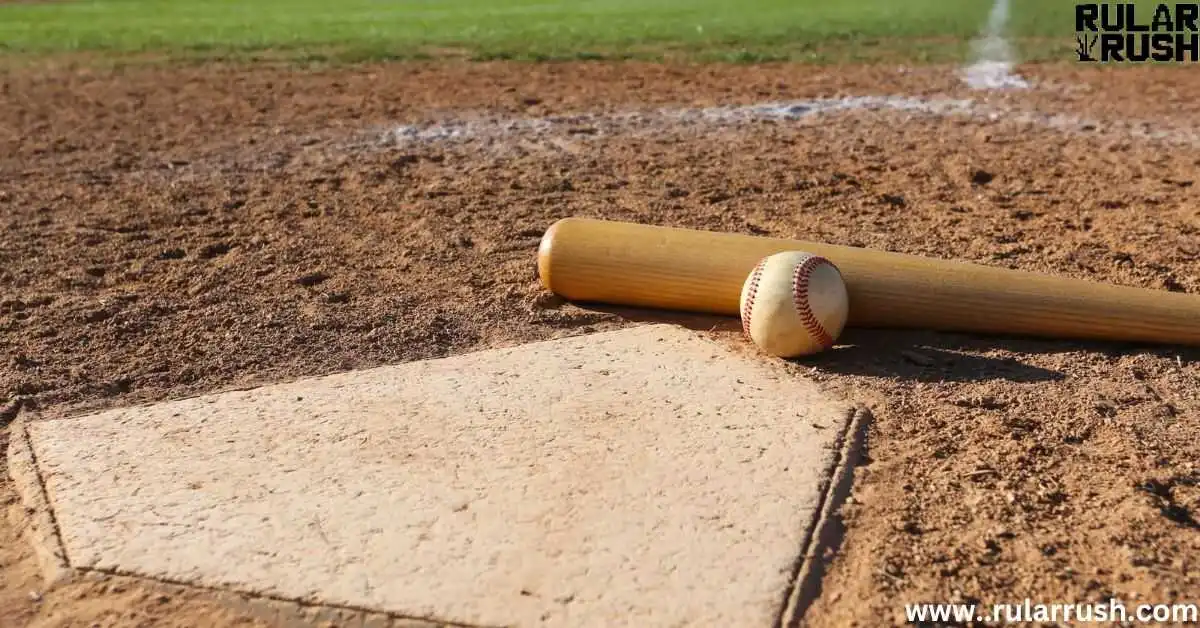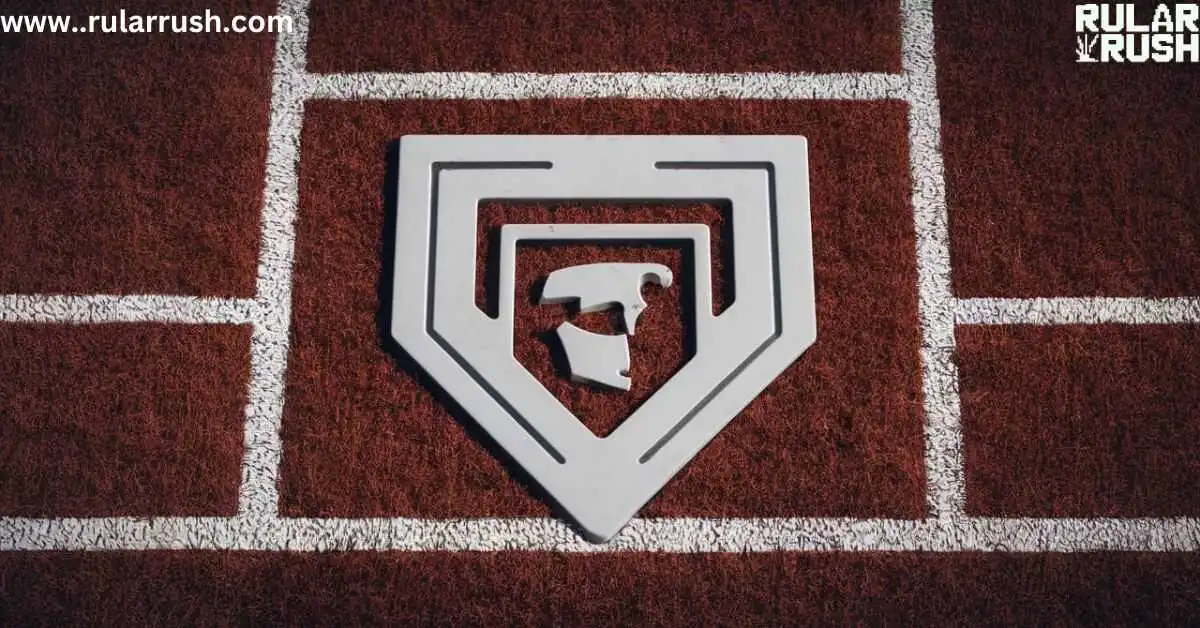The home plate dimensions are an essential aspect of baseball, defining the strike zone and serving as the final scoring base. Here’s a little fun fact for you: Home plate is actually an irregularly shaped five-sided object, measuring 17 inches across, has angled rear edges of 12 inches, and has short edges of 8.5 inches. Made from durable, white weather-resistant rubber, it is clearly visible. The design that Robert Keating established in the season of 1900-1901 has become synonymous with accuracy and fairness in the game.
Standard Measurements of a Baseball Home Plate
The dimensions of a baseball home plate are precisely regulated to ensure uniformity across the sport. These measurements are vital for players, umpires, and groundskeepers. Here is a breakdown of its official dimensions:
| Measurement | Size | Notes |
|---|---|---|
| Overall width and length | 17 inches (43.18 cm) | Square edges measure 8.5 inches |
| Angled rear edges | 12 inches (30.48 cm) | Creates the pointed end |
| Short adjacent edges | 8.5 inches (21.59 cm) | Parallel to the strike zone |
| Height | 1 inch (2.54 cm) | Slightly raised for visibility |
These dimensions are standardized by Major League Baseball (MLB) and are essential for ensuring fair play.

How Wide is Home Plate in Inches?
The width of home plate is precisely 17 inches. This dimension is critical as it aligns with the strike zone, helping umpires make accurate calls during the game.
Why is Home Plate Unique?
The home plate stands out due to its role in both scoring and officiating. While other bases act as simple markers for the running path, the home plate interacts with:
- Pitchers: Dictating the allowable area for strikes.
- Batters: Establishing boundaries for swings and strikes.
- Umpires: Offering a clear reference for ball and strike calls.
Its role makes it indispensable in regulating the flow and fairness of the game.
Historical Evolution of Home Plate Dimensions
The home plate size hasn’t always been consistent. In baseball’s early days, home plate was a circular object made of iron, weighing several pounds. It wasn’t until 1900-1901 that the modern 5-sided rubber plate was introduced by Robert Keating, a former baseball player and innovator. This design:

- Made it easier for pitchers to aim and batters to visualize the strike zone.
- Reduced injuries compared to metal plates.
- Standardized dimensions for fair gameplay.
Before this innovation, the lack of standardized dimensions often led to disputes and confusion during games. The current design reflects over a century of refinement to enhance gameplay and safety.
A Closer Look at the 1900-1901 Transition
Robert Keating’s 5-sided design introduced the concept of aligning the plate’s edges with the foul lines. This innovation:
- Simplified field setup for groundskeepers.
- Improved umpiring accuracy.
- Established a uniform strike zone across leagues.
The adoption of this design marked a turning point in baseball history, emphasizing precision and fairness.
Materials Used in Home Plate Construction
The baseball home plate is typically constructed from white rubber. This material is chosen for its durability and visibility. Key features include:

- Weather Resistance: White rubber withstands rain, sun, and general wear over multiple seasons.
- Shock Absorption: Reduces impact when players slide into home plate.
- Non-Slip Surface: Provides traction for players and umpires.
Evolution of Materials
Historically, materials like wood and iron were used for home plates. While these materials were readily available, they posed safety risks and required frequent replacement. The transition to rubber offered:
- Increased Durability: Reduced maintenance costs and downtime.
- Player Safety: Minimized injuries during slides and collisions.
The choice of white rubber ensures the plate is both functional and highly visible on the field.
Significance of Home Plate Shape in Defining the Strike Zone

The 5-sided shape of the home plate is integral to defining the strike zone, the area where a pitch must pass for a strike to be called. Here’s how the shape impacts gameplay:
- Square Front Edge (17 inches): Defines the width of the strike zone.
- Angled Rear Edges (12 inches): Create a pointed shape, aligning with the foul lines to mark fair territory.
- Short Adjacent Edges (8.5 inches): Ensure consistency for pitchers and batters.
The Strike Zone: A Dynamic Aspect of Baseball
The strike zone varies based on the batter’s stance, height, and posture. However, the fixed dimensions of the home plate provide a consistent reference for:
- Pitchers: Strategizing pitch placement.
- Batters: Gauging whether to swing.
- Umpires: Making precise calls.
This design simplifies umpiring and ensures pitches are judged accurately, improving the fairness of the game.
Comparison with Other Bases on the Field
Unlike the home plate, the other bases on a baseball field—first, second, and third bases—are square. Here’s a comparison:
| Base | Shape | Size | Material |
|---|---|---|---|
| Home Plate | 5-sided | 17 inches wide | White rubber |
| First, Second, Third | Square | 15 inches per side | Canvas or rubber |
Functional Differences
- First, Second, and Third Bases: Serve as markers for base runners.
- Home Plate: Acts as both a scoring point and a reference for pitches.
While the square bases mark running paths, the home plate serves additional purposes like determining the strike zone and indicating fair territory.
Regulations Governing Home Plate Specifications in MLB

The MLB has strict rules for the dimensions and placement of the home plate. According to the official rulebook:
- The front edge of home plate must align with the center of the pitcher’s mound.
- The pointed end must face directly away from the pitcher.
- Home plate must be flush with the ground, ensuring no tripping hazards.
Also Read :https://rularrush.com/standard-door-size-and-dimensions/
Ensuring Compliance
Groundskeepers and umpires frequently inspect the plate to ensure it meets these standards. Any deviations can impact gameplay and lead to disputes.
The Cultural Significance of Home Plate
Beyond its functional role, the home plate holds symbolic value in baseball. It represents the final destination for players striving to score, encapsulating the competitive spirit of the game.
Quotes About Home Plate
- “Home plate is where every journey ends and begins.” – Unknown.
- “Crossing home plate is the ultimate victory in baseball.” – Baseball historian.
FAQs
Here are the answers to the questions directly:
What are the dimensions for a home plate?
The home plate dimensions are 17 inches (43.18 cm) wide, with rear angled edges measuring 12 inches (30.48 cm) and short adjacent sides at 8.5 inches (21.59 cm).
What are the angles of the home plate?
The rear angles of the home plate are both 90 degrees, creating the pointed shape that aligns with the foul lines.
How wide is the home plate story?
The home plate is 17 inches wide, defining the width of the strike zone and serving as a key reference for pitches and gameplay.
What are plate dimensions in CM?
In centimeters, the home plate dimensions are: 43.18 cm wide, rear edges 30.48 cm, and adjacent sides 21.59 cm.
Home plate dimensions in meters
In meters, the home plate dimensions are approximately 0.43 meters wide, with rear edges of 0.30 meters and short adjacent edges of 0.21 meters.
Home plate dimensions and angles
The home plate has dimensions of 17 inches wide, with specific angles at the rear forming a five-sided design. The angles ensure perfect alignment with the foul lines for accurate play.
Conclusion
The home plate dimensions are a cornerstone of baseball, representing precision and fairness in the game. Measuring 17 inches wide, with angled rear edges of 12 inches and short adjacent sides of 8.5 inches, its unique 5-sided design sets it apart from other bases. Constructed from durable white rubber, it aligns with the foul lines, defining the strike zone and ensuring consistent umpiring. Established during the 1900-1901 season, the home plate’s standardized measurements and materials enhance gameplay, safety, and fairness, making it an indispensable feature of baseball across all levels.

Elizabeth is an experienced blogger at “Rular Rush,” specializing in delivering precise and insightful content on various measurement topics. With a passion for simplifying complex concepts, she brings clarity and depth to each post, making technical information easy to understand for readers worldwide.






